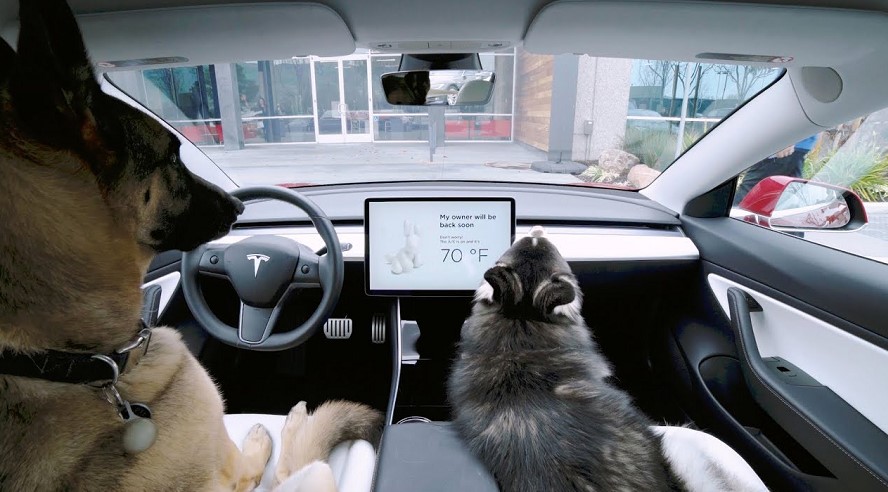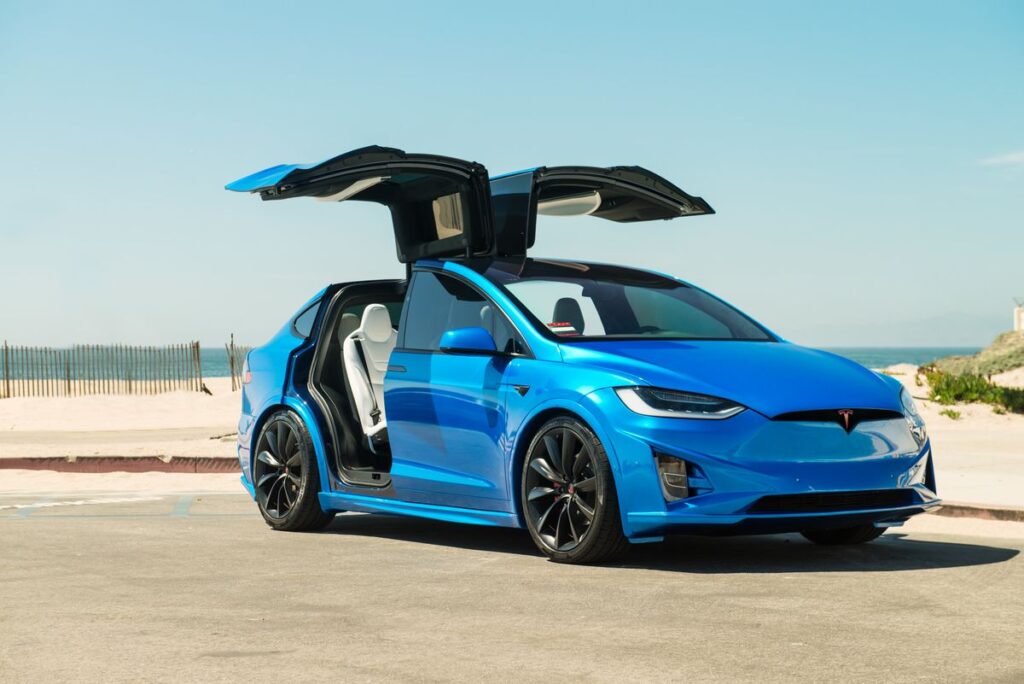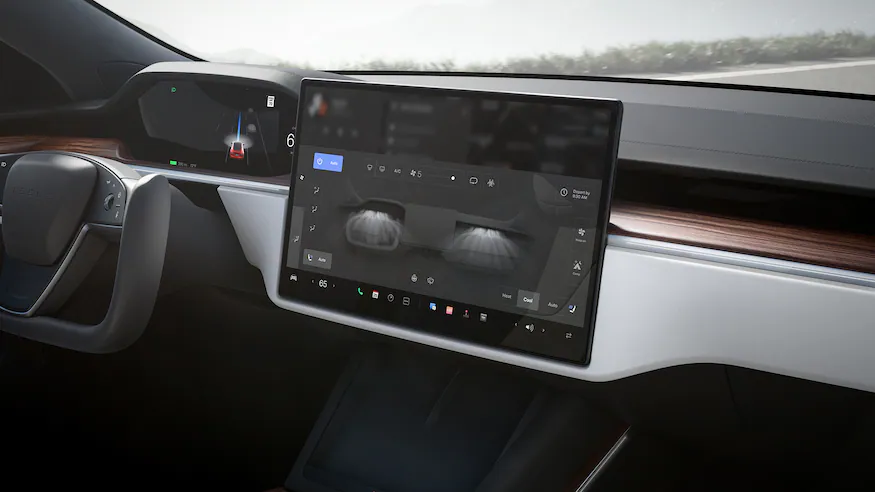Cabin Overheat Protection (COP), an inherent function of Tesla cars, helps keep the inside cool by turning on the HVAC fan or AC if the temperature rises. The feature can operate for up to 12 hours or until the battery drops to 20% and is intended to prevent pain and harm to electronics and other personal property.

Contents
- 1 Elon Musk about Tesla model cabin overheat protection feature
- 2 Tesla Cabin Overheat protection, air conditioning system
- 3 What does Cabin Overheat mean on a Tesla?
- 4 How exactly does the COP feature work?
- 5 “Dog mode” and climate control system
- 6 Does cabin overheat protection use a lot of battery?
- 7 Is Tesla Cabin Overheat Protection necessary?
- 8 Tesla keeps the car cabin cool even under summer heat
- 9 Can I turn the cabin overheat protection off?
- 10 How hot is too hot for the Tesla interior?
- 11 Frequently Asked Questions
Elon Musk about Tesla model cabin overheat protection feature
In July 2017, Elon responded to a customer complaint on Twitter regarding the Overheat Protection on Tesla vehicles.
He acknowledged the issue and committed to improving the system in future vehicles.
The Cabin Overheat system protects children and pets all summer from high temperatures by keeping the inside temp comfortable despite the outside temperature, even when parked and unoccupied.
- Tesla has a COP that uses sensors to detect when the temperature inside the car gets too hot, and a cooling system that automatically kicks in to bring the temperature down.
- Tesla’s Model S and Model X have Cabin Overheat Protection software that can detect if a child or pet is left in the car, keeping the temperature safe until the driver returns. Tesla owners can also activate “Dog Mode”.
Tesla Cabin Overheat protection, air conditioning system
Tesla Cabin Overheat Protection: this is a feature designed to prevent the interior of a Tesla from becoming too hot while parked under direct sun or high heat.
The Cabin Overheat Protection keeps the interior at a suitable level for passengers while avoiding harm to the car’s electronic components by automatically monitoring the temperature within the vehicle and activating the air conditioning system, as necessary.
Additionally, Tesla’s mobile app allows owners to remotely activate the Tesla climate control within Tesla Overheat Protection to pre-cool or pre-heat the interior of the car before getting inside.
What does Cabin Overheat mean on a Tesla?
Cabin Overheat Protection: one of the most important features of Cabin Overheat Protection is to prevent any damage that might be interfering.
If the interior of a Tesla model gets up to 104 degrees Fahrenheit, which is the threshold at which the air conditioner system activates, the cooling system will turn on.
Tesla also developed a mobile Tesla app that happy owners can use to set wishful conditions inside cars.
How exactly does the COP feature work?
Cabin Overheat Protection is a feature on Teslas that helps to keep the inside of the car at a comfortable temperature, even when it’s parked in direct sunlight.
The HVAC function uses sensors and the car’s air distribution system, the feature can detect when the interior starts to heat up and will automatically turn on the air flowing to cool it down.
This prevents the cabin from reaching dangerously hot temperatures and can make the car more comfortable to enter after being parked for an extended period of time.
“Dog mode” and climate control system
Tesla cars have a sophisticated heating and cooling system that utilizes advanced technology to optimize passenger comfort and vehicle efficiency.
Tesla Cabin Overheat Protection uses a heat pump to transfer heat into and out of the cabin, which helps maximize energy efficiency and range.
Additionally, the system can be controlled via the car’s touchscreen or through the app, allowing drivers to pre-condition the cabin before they even step inside the car with the selected temperature.
Heated seats also may be set through the app to pre-heat the front seats based on cabin temperature.
“Dog Mode” is a feature in Tesla cars that allows drivers to keep their pets safe and comfortable while they are parked.
COP allows you to enjoy your time inside the car while the outside temperature is way lower, camp mode helps you feel closer to nature.
Cabin Overheat Protection operates the charge of the car to save battery, so passengers may not worry about any safety measures, the car system will operate to protect you from outside conditions.

Does cabin overheat protection use a lot of battery?
The precise make and model of the car, as well as the temperature and quantity of use, can all affect how much battery Cabin Overheat Protection uses.
To maintain a pleasant interior, most vehicles with this feature utilize a modest amount of battery power.
It is always a good idea to read the owner’s handbook or get in touch with the manufacturer for further details on the system’s specifications if you are worried about battery usage.
Is Tesla Cabin Overheat Protection necessary?
The Cabin Overheat Protection is a crucial feature since it aids in preventing the interior from being overheated in warm weather.
Since that extended exposure to hot temperatures can result in dehydration, heatstroke, and other health problems, this is crucial for the comfort and safety of passengers.
Also, the battery and electronic systems of the car can be harmed by extreme heat. In order to keep the inside of the car cool and comfortable for the occupants while also safeguarding the car’s components, the overheat protection automatically cools the interior using air conditioning when the temperature rises above a predetermined level.
Tesla keeps the car cabin cool even under summer heat
However, using this feature can result in significant battery drain, as the car’s air conditioning system needs to operate continuously to maintain the desired temperature inside the cabin.
Additionally, Tesla vehicles have a mobile app that allows owners to remotely monitor and control the cabin temperature, which can be a more energy-efficient alternative.
Tesla’s Cabin Overheat Protection is a feature that maintains a comfortable temperature inside the car, even when it’s parked in hot weather.
When cabin temperatures exceed a predetermined level, the air conditioner system automatically turns on to cool down the cabin temperature.
It’s worth noting that using the Cabin Overheat Protection feature can reduce the car’s range, so it’s best to use it on days when you need it, rather than leaving it on all the time.
Can I turn the cabin overheat protection off?
The Cabin Overheat Protection can be shut down via the climate control feature in the Tesla app.
Also, the HVAC system will be active until it’s been 12 hours since the driver has exited or unless the battery charge is less than 20%.
How hot is too hot for the Tesla interior?
During different weather conditions, the interior temperature may vary. Depending on the climate section, the Cabin Overheat Protection system may activate high fan speed to pre-cool the interior of the car.
However, the temp inside usually depends on Tesla owners’ preferences.
At the same time, as a safety measure, Overheat Protection might have an automatic shut-off to prevent battery drain.

Frequently Asked Questions
Is Overheat Protection necessary?
Cabin Overheat Protection is crucial to prevent damage and failure of electronic devices on electric vehicles due to inflated temperatures.
Cabin Overheat Protection mechanisms like fans, temperature sensors, and shutdown systems are used to detect and control warmth levels to ensure the safe operation of the device.
Will Cabin Overheat Protection in Tesla use the battery a lot?
The Cabin Overheat Protection Tesla cars are designed to keep the cabin temperature within a safe range even in extremely hot weather conditions.
While this feature may use some additional battery power, it is not expected to significantly affect the overall range of the car’s battery.
What is the activation temperature for Cabin Protection?
The Cabin Overheat Protection system in Tesla cars automatically turns on when the interior temperature of the car reaches around 104 °F.
The system keeps the interior temperature at a safe level even when the car is parked under direct sunlight or in extremely hot conditions.
How warm is it inside the interior when the system is active?
The temperature inside a Tesla vehicle’s interior when the climate control system is active will vary depending on your desired temperature settings. You can adjust the temperature using the touchscreen display or the Tesla mobile app.
Read More About: Overview of Climate Controls



